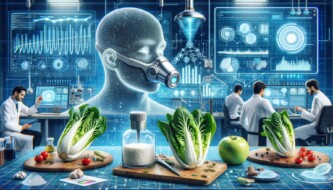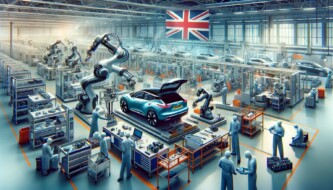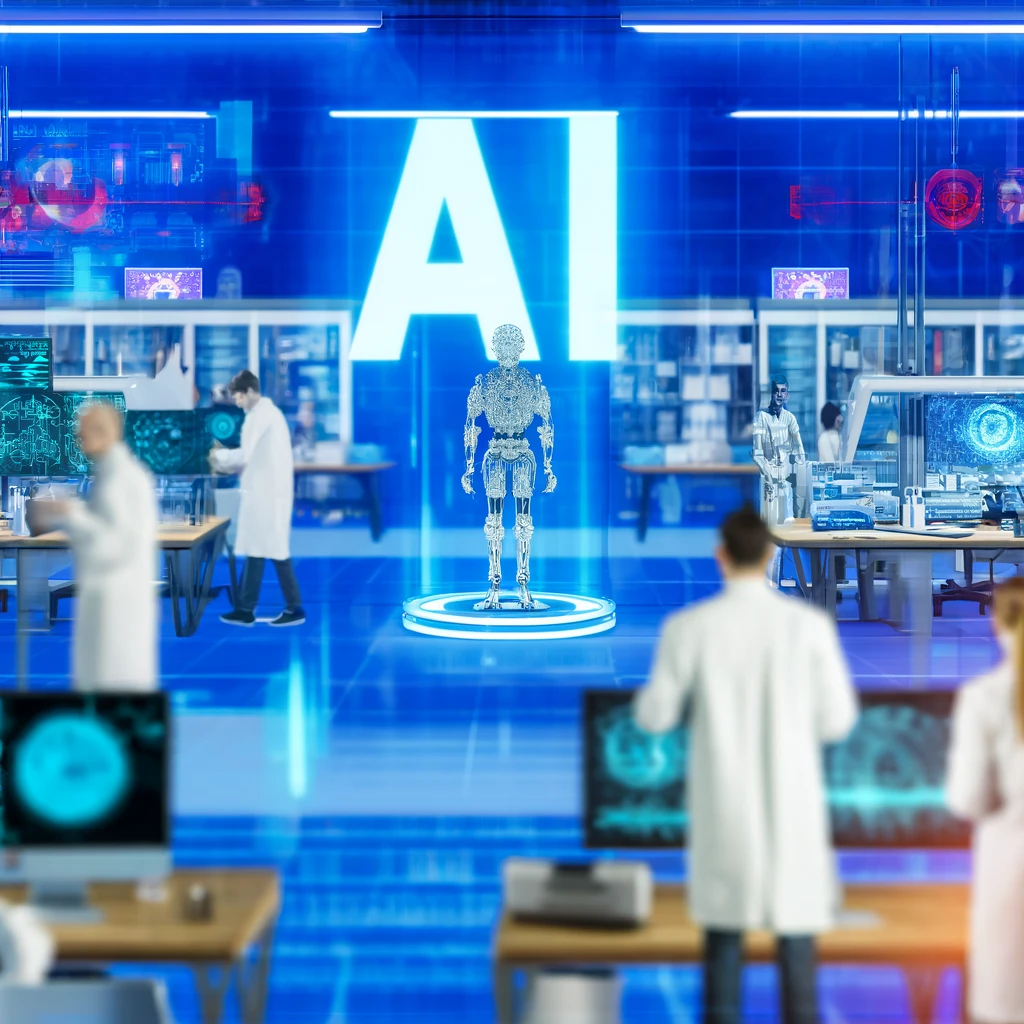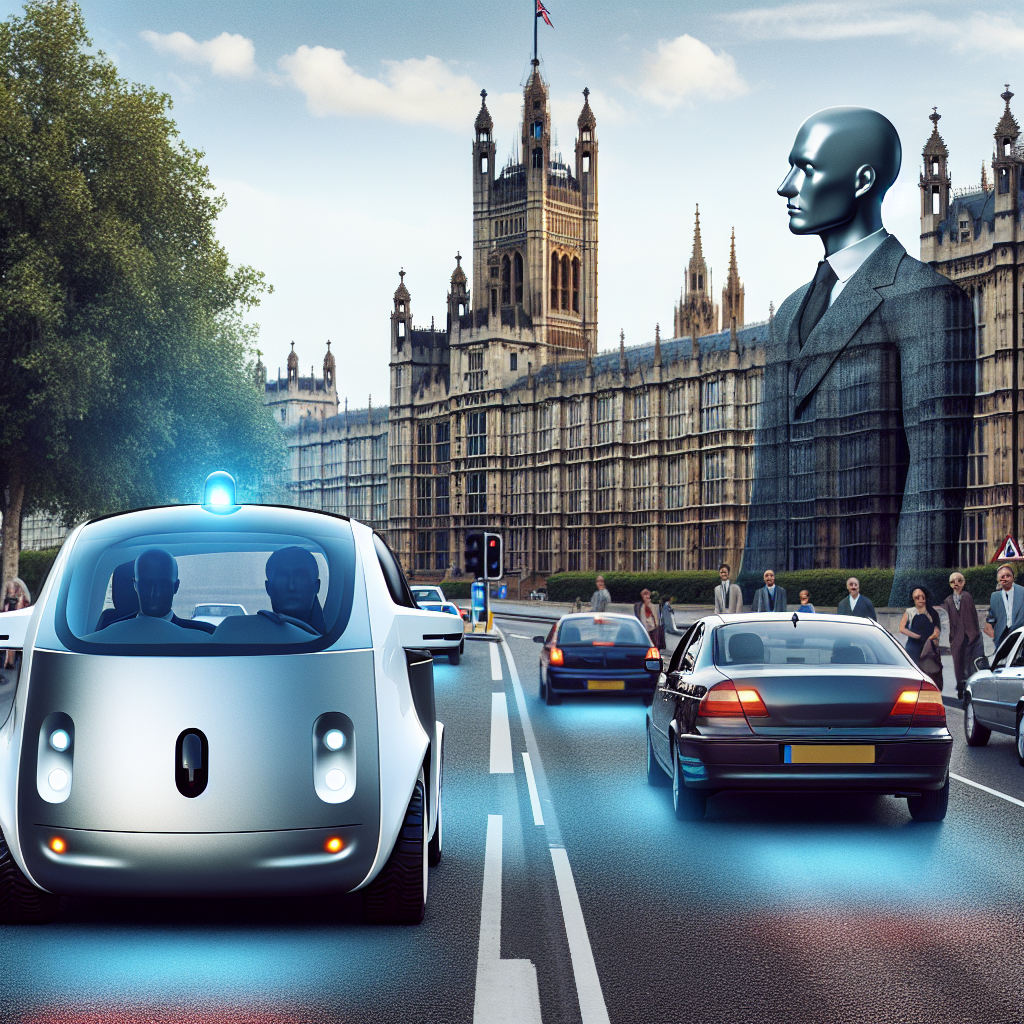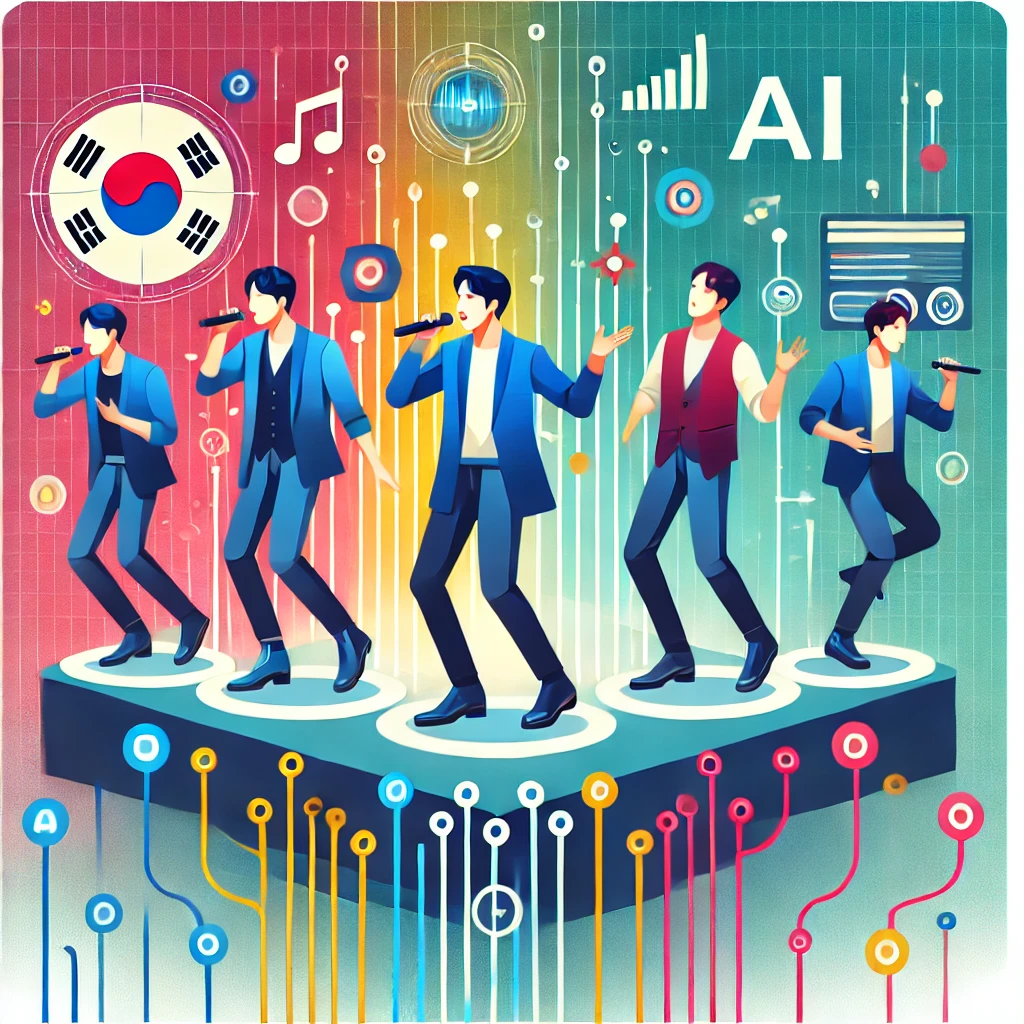Recent advancements in artificial intelligence (AI) have led to the development of electronic noses, high-tech sensors that can detect and identify specific smells. These electronic noses have the potential to transform food safety by detecting potentially deadly foodborne bacteria such as salmonella and E. Coli. Each strain of bacteria produces a unique volatile organic compound (VOC) fingerprint, which creates a different electric signal in the electronic nose. This signal is then recorded and analyzed by an AI software system, which compares it to a database and notifies the user of any potential contamination.
One Israeli company, Sensifi, has developed e-noses that can be used on-site by food producers, providing results in less than one hour. This is a significant improvement compared to the current method of sending samples to a laboratory and waiting for days for the results. Sensifi aims to make its machines affordable and generate revenue through subscription fees.
Food poisoning is a serious problem worldwide, with millions of people getting sick and thousands dying each year. Romaine lettuce has been identified as a major culprit in recent years. As the food market becomes more industrialized, it becomes more susceptible to pathogens. German firm NTT Data Business Solutions is using coffee to train the AI that powers its e-nose. By exposing the sensors to different types of coffee, the AI learns to identify the unique combination of gases that make up the odor of fresh and good-quality coffee.
While the latest e-noses show promising results, some experts believe that the cost may deter food firms from adopting this technology on a large scale. Deploying a worldwide network of e-nose detectors would require significant investment and may not be financially viable for many businesses. Additionally, fine-tuning the e-noses for each facility would be a complex task. However, entrepreneurs like Scentian Bio in New Zealand are undeterred and have developed biosensors that are thousands of times more sensitive than a dog’s nose. These biosensors have a wide range of applications, including food quality control, disease diagnosis, and environmental monitoring.
Original news source: The electronic noses designed to prevent food poisoning (BBC)
Listen
Slow
Normal
Fast
Group or Classroom Activities
Warm-up Activities:
– Charades
Instructions: Divide the class into two teams. Give each team a piece of paper with a specific smell related to the article (e.g. coffee, salmonella, fresh lettuce) written on it. One student from each team will come to the front and act out the smell without speaking. The team members must guess the smell within a certain time limit. The team with the most correct guesses wins.
– News Summary
Instructions: In pairs, students will take turns summarizing the main points of the article to their partner. After each summary, the partner will give feedback and ask follow-up questions. Then, they will switch roles. Encourage students to use their own words and focus on the key information.
– Vocabulary Pictionary
Instructions: Write a list of vocabulary words from the article on the board (e.g. AI, electronic noses, volatile organic compound). Divide the class into small groups and give each group a set of blank paper and markers. One student from each group will choose a word from the list and draw a picture to represent it. The other group members must guess the word based on the drawing. The group with the most correct guesses wins.
– Opinion Poll
Instructions: Divide the class into small groups. Each group will discuss and debate the following question: “Do you think electronic noses will revolutionize food safety? Why or why not?” After the discussion, each group will present their opinions to the class and provide reasons to support their stance. Encourage students to use vocabulary and concepts from the article in their discussions.
– Keyword Taboo
Instructions: Write a list of keywords from the article on separate pieces of paper and distribute them to the students. Each student will take turns describing the keyword on their paper without using the word itself or any derivatives. The other students must guess the keyword based on the description. The student with the most correct guesses at the end wins.
Comprehension Questions:
1. How do electronic noses detect and identify specific smells?
2. What is the potential impact of electronic noses on food safety?
3. How does Sensifi’s e-nose technology improve upon the current method of testing for foodborne bacteria?
4. What is the role of AI in analyzing the signals recorded by electronic noses?
5. Why is food poisoning a significant problem worldwide?
6. How is NTT Data Business Solutions training the AI for their e-nose technology?
7. What are some potential barriers to widespread adoption of electronic noses in the food industry?
8. What are some other applications of biosensors like those developed by Scentian Bio?
Go to answers ⇩
Listen and Fill in the Gaps:
Recent advancements in artificial intelligence (AI) have led to the development of electronic noses, high-tech sensors that can detect and identify specific smells. These electronic noses have the (1)______ to transform food safety by detecting potentially deadly foodborne bacteria such as salmonella and E. Coli. Each strain of bacteria produces a unique volatile organic compound (VOC) fingerprint, which (2)______ a different electric signal in the electronic nose. This signal is then recorded and (3)______ by an AI software system, which (4)______ it to a database and notifies the user of any potential contamination.
One Israeli company, Sensifi, has developed e-noses that can be used on-site by food producers, providing (5)______ in less than one hour. This is a significant improvement compared to the (6)______ method of sending samples to a laboratory and waiting for days for the results. Sensifi aims to make its machines (7)______ and (8)______ revenue through subscription fees.
Food poisoning is a serious problem worldwide, with millions of people getting sick and thousands dying each year. Romaine lettuce has been (9)______ as a major culprit in recent years. As the food market becomes more industrialized, it becomes more susceptible to (10)______. (11)______ firm NTT Data Business Solutions is using coffee to train the AI that powers its e-nose. By exposing the sensors to different types of coffee, the AI learns to identify the unique combination of gases that make up the odor of (12)______ and good-quality coffee.
While the latest e-noses show promising results, some experts believe that the cost may deter food firms from adopting this technology on a (13)______ scale. Deploying a worldwide (14)______ of e-nose detectors would require (15)______ investment and may not be financially viable for many businesses. Additionally, fine-tuning the e-noses for each facility would be a complex task. However, (16)______ like Scentian Bio in New Zealand are undeterred and have developed biosensors that are thousands of times more sensitive than a dog’s nose. These biosensors have a wide range of applications, including food quality control, disease diagnosis, and environmental monitoring.
Go to answers ⇩
Discussion Questions:
Students can ask a partner these questions, or discuss them as a group.
1. What is an electronic nose and how does it work?
2. How would you feel if you found out that the food you ate was contaminated with bacteria?
3. Do you think electronic noses will be effective in preventing food poisoning? Why or why not?
4. What is your opinion on using AI technology to detect foodborne bacteria? Do you think it is a good idea? Why or why not?
5. Do you like the idea of using electronic noses in the food industry? Why or why not?
6. How do you think the development of electronic noses will impact food safety regulations?
7. What is your experience with food poisoning? Have you ever gotten sick from contaminated food?
8. Do you think the cost of implementing electronic noses will be a barrier for food firms? Why or why not?
9. How do you think the use of electronic noses will affect the job market in the food industry?
10. How would you feel if you found out that the coffee you were drinking was contaminated?
11. Do you think the use of electronic noses will make people more cautious about the food they consume? Why or why not?
12. What other applications do you think electronic noses could have, besides food safety?
13. How do you think the development of electronic noses will impact the agriculture industry?
14. Do you think electronic noses will eventually replace traditional food safety testing methods? Why or why not?
15. How do you think the use of electronic noses will affect consumer trust in the food industry?
Individual Activities
Vocabulary Meanings:
Match each word to its meaning.
Words:
1. electronic
2. salmonella
3. database
4. subscription
5. pathogens
6. investment
7. biosensors
8. monitoring
Meanings:
(a) A type of bacteria that can cause food poisoning
(b) Microorganisms that can cause disease
(c) Devices that detect and respond to biological changes
(d) The act of putting money into something to make a profit
(e) The act of observing and checking something over time
(f) A structured set of data stored in a computer
(g) Relating to devices that use electricity or circuits
(h) A regular payment made to access a service
Go to answers ⇩
Multiple Choice Questions:
1. What is the main purpose of electronic noses?
(a) To analyze electric signals
(b) To compare data in a database
(c) To generate revenue through subscription fees
(d) To detect and identify specific smells
2. How do electronic noses detect foodborne bacteria?
(a) By sending samples to a laboratory
(b) By using AI software
(c) By analyzing volatile organic compounds (VOCs)
(d) By comparing different odors
3. What is one advantage of using electronic noses in food safety?
(a) Providing results in less than one hour
(b) Generating revenue through subscription fees
(c) Making food producers more industrialized
(d) Training AI with different types of coffee
4. What is a major cause of food poisoning?
(a) Pathogens in food
(b) Industrialized food markets
(c) Romaine lettuce
(d) Coffee odor
5. What is one potential obstacle to adopting electronic noses on a large scale?
(a) The sensitivity of the biosensors
(b) The availability of coffee for training AI
(c) The complexity of fine-tuning the e-noses
(d) The cost of deployment
6. What is one application of biosensors developed by Scentian Bio?
(a) Training AI with different types of coffee
(b) Food quality control
(c) Financial viability for businesses
(d) Disease diagnosis in dogs
7. What is one advantage of electronic noses compared to the current method of food safety testing?
(a) Sending samples to a laboratory
(b) Waiting for days for the results
(c) Providing faster results
(d) Making food producers more industrialized
8. What is the main purpose of Sensifi’s e-noses?
(a) To generate revenue through subscription fees
(b) To be used on-site by food producers
(c) To analyze electric signals
(d) To compare data in a database
Go to answers ⇩
True or False Questions:
1. Food poisoning is not a serious problem worldwide, with only a few people getting sick and a few dying each year.
2. Electronic noses have the potential to worsen food safety by detecting foodborne bacteria.
3. Some experts believe that the cost will encourage food firms to adopt this technology on a large scale.
4. Each strain of bacteria produces a unique volatile organic compound fingerprint.
5. Recent advancements in artificial intelligence have led to the regression of electronic noses.
6. Sensifi, an Israeli company, has developed e-noses that provide results in less than one hour.
7. NTT Data Business Solutions is using coffee to train the AI that powers its e-nose.
8. Scentian Bio in New Zealand has developed biosensors that are thousands of times more sensitive than a dog’s nose.
Go to answers ⇩
Write a Summary:
Write a summary of this news article in two sentences.
Check your writing now with the best free AI for English writing!
Writing Questions:
Answer the following questions. Write as much as you can for each answer.
Check your answers with our free English writing assistant!
1. How do electronic noses detect and identify specific smells?
2. What is the potential impact of electronic noses on food safety?
3. How does Sensifi aim to make its machines affordable?
4. What is the role of coffee in training the AI that powers e-noses?
5. What are some potential challenges to the widespread adoption of e-nose technology in the food industry?
Answers
Comprehension Question Answers:
1. How do electronic noses detect and identify specific smells?
– Electronic noses detect and identify specific smells by recording the electric signals produced by volatile organic compounds (VOCs) released by the smell. Each strain of bacteria produces a unique VOC fingerprint, which creates a different electric signal in the electronic nose.
2. What is the potential impact of electronic noses on food safety?
– The potential impact of electronic noses on food safety is significant. They have the ability to detect and identify potentially deadly foodborne bacteria such as salmonella and E. Coli. This can help prevent outbreaks of food poisoning and ensure the safety of food products.
3. How does Sensifi’s e-nose technology improve upon the current method of testing for foodborne bacteria?
– Sensifi’s e-nose technology improves upon the current method of testing for foodborne bacteria by providing results in less than one hour, compared to the current method of sending samples to a laboratory and waiting for days for the results. This allows for faster detection and response to potential contamination.
4. What is the role of AI in analyzing the signals recorded by electronic noses?
– The role of AI in analyzing the signals recorded by electronic noses is to compare the recorded signal to a database and identify any potential contamination. AI software systems analyze the signals and use machine learning algorithms to recognize patterns and identify specific smells associated with different strains of bacteria.
5. Why is food poisoning a significant problem worldwide?
– Food poisoning is a significant problem worldwide because it affects millions of people and causes thousands of deaths each year. As the food market becomes more industrialized, the risk of contamination and the spread of foodborne bacteria increases. This poses a serious threat to public health and safety.
6. How is NTT Data Business Solutions training the AI for their e-nose technology?
– NTT Data Business Solutions is training the AI for their e-nose technology by exposing the sensors to different types of coffee. The AI learns to identify the unique combination of gases that make up the odor of fresh and good-quality coffee. This training helps the AI recognize and identify specific smells associated with different substances.
7. What are some potential barriers to widespread adoption of electronic noses in the food industry?
– Some potential barriers to widespread adoption of electronic noses in the food industry include the cost of deploying a worldwide network of e-nose detectors, which may be financially unviable for many businesses. Additionally, fine-tuning the e-noses for each facility would be a complex task. There may also be resistance to adopting new technology and changing established testing methods.
8. What are some other applications of biosensors like those developed by Scentian Bio?
– Some other applications of biosensors like those developed by Scentian Bio include food quality control, disease diagnosis, and environmental monitoring. Biosensors can be used to detect and identify various substances and compounds, making them valuable tools in a wide range of industries and fields.
Go back to questions ⇧
Listen and Fill in the Gaps Answers:
(1) potential
(2) creates
(3) analyzed
(4) compares
(5) results
(6) current
(7) affordable
(8) generate
(9) identified
(10) pathogens
(11) German
(12) fresh
(13) large
(14) network
(15) significant
(16) entrepreneurs
Go back to questions ⇧
Vocabulary Meanings Answers:
1. electronic
Answer: (g) Relating to devices that use electricity or circuits
2. salmonella
Answer: (a) A type of bacteria that can cause food poisoning
3. database
Answer: (f) A structured set of data stored in a computer
4. subscription
Answer: (h) A regular payment made to access a service
5. pathogens
Answer: (b) Microorganisms that can cause disease
6. investment
Answer: (d) The act of putting money into something to make a profit
7. biosensors
Answer: (c) Devices that detect and respond to biological changes
8. monitoring
Answer: (e) The act of observing and checking something over time
Go back to questions ⇧
Multiple Choice Answers:
1. What is the main purpose of electronic noses?
Answer: (d) To detect and identify specific smells
2. How do electronic noses detect foodborne bacteria?
Answer: (c) By analyzing volatile organic compounds (VOCs)
3. What is one advantage of using electronic noses in food safety?
Answer: (a) Providing results in less than one hour
4. What is a major cause of food poisoning?
Answer: (a) Pathogens in food
5. What is one potential obstacle to adopting electronic noses on a large scale?
Answer: (d) The cost of deployment
6. What is one application of biosensors developed by Scentian Bio?
Answer: (b) Food quality control
7. What is one advantage of electronic noses compared to the current method of food safety testing?
Answer: (c) Providing faster results
8. What is the main purpose of Sensifi’s e-noses?
Answer: (b) To be used on-site by food producers
Go back to questions ⇧
True or False Answers:
1. Food poisoning is not a serious problem worldwide, with only a few people getting sick and a few dying each year. (Answer: False)
2. Electronic noses have the potential to worsen food safety by detecting foodborne bacteria. (Answer: False)
3. Some experts believe that the cost will encourage food firms to adopt this technology on a large scale. (Answer: False)
4. Each strain of bacteria produces a unique volatile organic compound fingerprint. (Answer: True)
5. Recent advancements in artificial intelligence have led to the regression of electronic noses. (Answer: False)
6. Sensifi, an Israeli company, has developed e-noses that provide results in less than one hour. (Answer: True)
7. NTT Data Business Solutions is using coffee to train the AI that powers its e-nose. (Answer: True)
8. Scentian Bio in New Zealand has developed biosensors that are thousands of times more sensitive than a dog’s nose. (Answer: True)
Go back to questions ⇧



